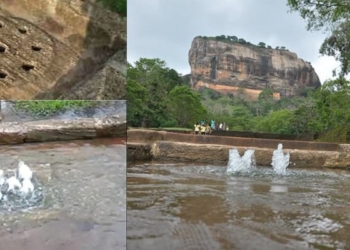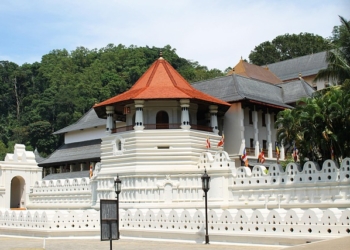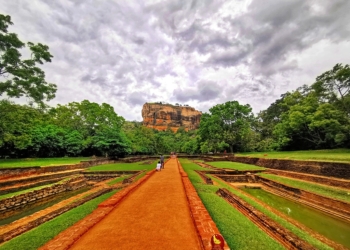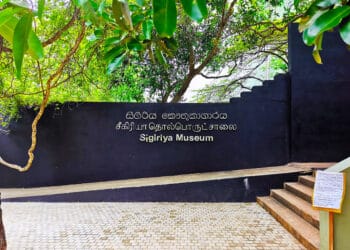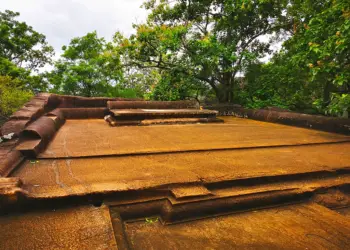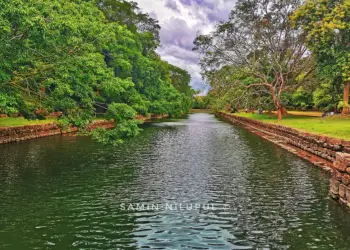
The Jathika Namal Uyana, one of the most important historical sites in Sri Lanka, is considered to be the largest Na forest in Sri Lanka. Spread over an area of about 260 acres, it is home to the largest pink quartz mountain range in South Asia. Namal Uyana is a popular destination among both local and foreign tourists. It is of great historical value. The Jathika Namal Uyana specializes in being a human sanctuary, historical significance, biodiversity and geographically. In Namal Uyana, there are many Na trees with small waterfalls and split stems. There are also large Na trees, around 1500 years old, and two major Na species known as Diya Na and Batu Na.
Pink Quartz Range


The Jathika Namal Uyana is spread over an area of 105 acres and is surrounded by seven mountain ranges. The Pink Quartz Range is thought to be 500 million years old, and the mountain range is between 180 and 300 meters above sea level. According to some historical legends. It was obtained from the treasure trove of pink quartz during the construction of the Taj Mahal shrine in India. A stone sheet is placed in the Namal Uyana and a stream of water flows down from the Mount of Pisces. Residents of the area have known the Pisces Mountain as a “salt rock forge”. There is a popular belief amongst the villagers that the heat emanating from this area and the springs of the mountains can cure various diseases. Today, the colour of the mountains has been discoloured due to constant contact with the foot and the surface layer being digested and exposed to intense sun and water for a long time. Even though the surface of the mountain has disappeared, it has been found to be purple within 1-2 feet. At the top of the hill is a pink statue of Buddha.
Location
Jathika Namal Uyana has been designated as a protected area in Sri Lanka. Namal Uyana can be accessed from Madatugama junction on the Colombo – Anuradhapura main road and travelled about 7km along the Adiyagala road to the Galkiriyagama area. Namal Uyana can also be reached by turning from the 91st junction of the Galewela – Dambulla road and coming to Pubbogama on the road leading to the Galkiriyagama road via Ibbankatuwa tank. The land was formerly a fertile farm and covers an area of 3000 acres. It is surrounded by the Namal Uyana Maha Indigolla Wewa, Dig Annewa Wewa, Ranawa Wewa, Ibbankotuwa Wewa and Kala Wewa. It is surrounded by the Namal Uyana Maha Indigolla Wewa, Dig Annewa Wewa, Ranawa Wewa, Ibbankotuwa Wewa and Kala Wewa.
Historical information
The Mahavamsa mentions that King Dappula III erected a temple called Nawachunna in the Namal Uyana premises. According to the Mahavamsa, King Kasyapa IV had built a temple called Rat Malagala in this land. According to folklore, King Dappula IV had built a temple called Ran Dematmal Pirivena. But it is impossible to pinpoint who was the founder of Namal Uyana. The history of this historical Na forest dates back to the days of King Devanampiyatissa. In the past, this site was free of Na trees and is believed to be a rehabilitation centre for wrongdoers. It is believed that this was one of the steps taken to rehabilitate the trees. A tomb inscription found during the reign of King Devanam Piyatissa.The Forest has been declared a sanctuary by Dappula IV. As proof, a stone pillar was found in the Ulpathagama area on the Adiyagala road. According to the inscriptions found in the inscription, the king did not even have the power to seize the culprits of what is now Namal Uyana. According to the Aadiyagala inscription, it is clear that this area is the first human sanctuary in the world that has been a sanctuary for animals as well as humans. Historical information is still being studied in the area below the Thiruvananthapuram Mountains, making it difficult to access the area. There is a stone Bodhgir, a statue house, a stone apple, a haunted house and a moonstone lamp.
Biodiversity
Na is a major tree found in the Jathika Namal Uyana. Batu Na and Diya Na are the two major Na species found in Sri Lanka. Batu Na is the national tree of Sri Lanka. Apart from this, there are several species of plants belonging to the Dry Zone. Among them Neem, Ceylon oak, Black plum, Sapotaceae, Drypetes septaria, Ceylon ebony, Arjun tree, Kalu Mediriya and Golden shower tree.
A significant number of animals live in the area around Namal Uyana. About 14 species of animals are reported to be endemic to Sri Lanka. In the past, large numbers of elephants were inhabited, but are rarely seen today. Other species include the Fox, Mouse-deer, Wild boar, Golden mongoose, Leopard, Rabbit, Grey Langur, Civet, Indian pangolin, Porcupine, Slender loris, Grizzled giant squirrel, Fishing cat, Rusty-spotted cat, Jungle cat, Antelope rat and the Bandicoot rat.
About 60 species of birds have been recorded in the Namal Uyana area. More than 12 species of these species are endemic to Sri Lanka. Among them are native bird species. Among these species are the endemic birds of Sri Lanka, such as the Sri Lanka spurfowl, Sri Lankan junglefowl, Sri Lanka hanging parrot, Red-faced malkoha, Sri Lanka grey hornbill, Small Barbet. All the snakes are found in the dry zone forests can be seen from the Namal Uyana forest.




Pink Quartz Mountain 

Pink Quartz Mountain 
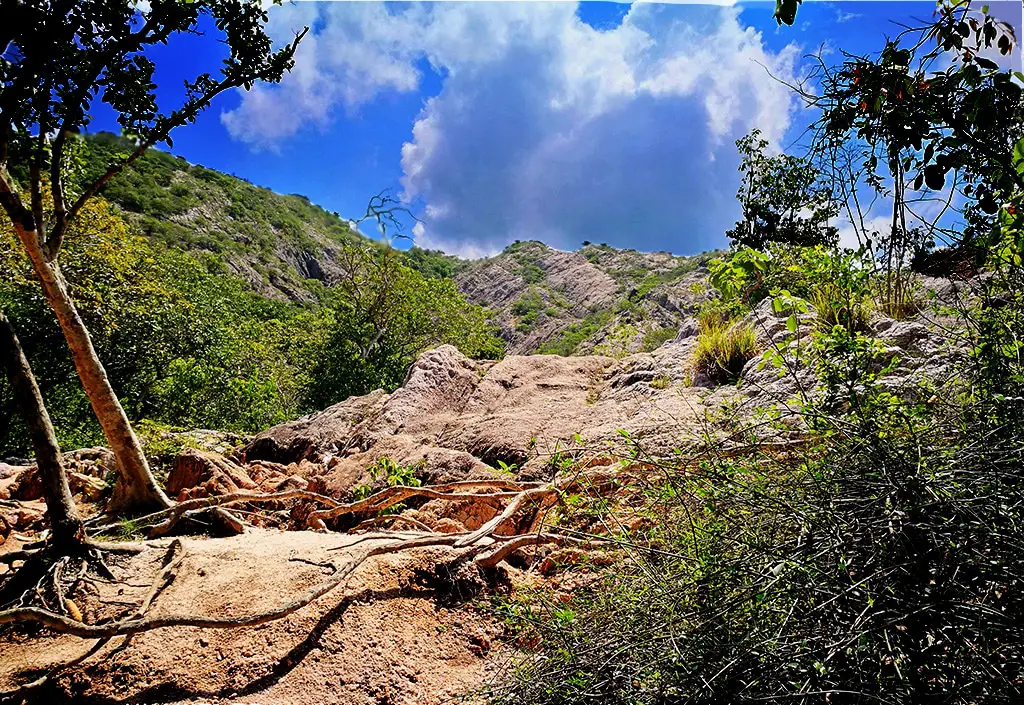
Pink Quartz Mountain 









Entrance Fees(Ticket Price)
1- Person-500LKR




